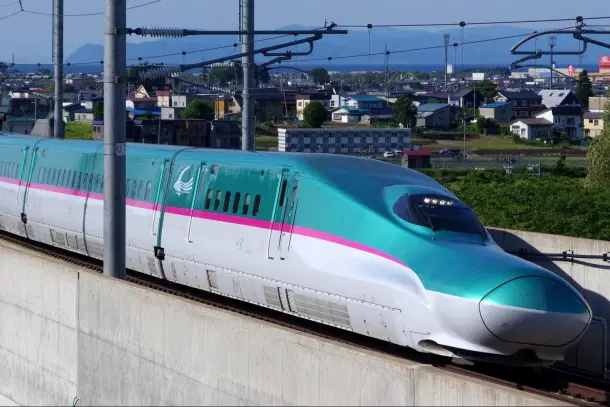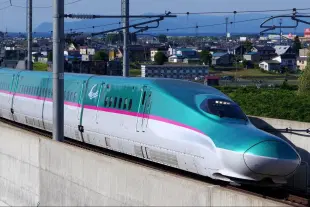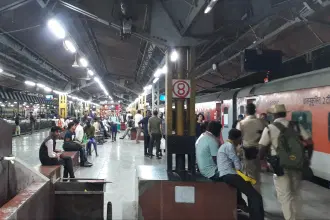Infrastructure
Mumbai–Ahmedabad Bullet Train: Rs 78,839 Crore Spent On The Project, 400 Km Of Foundations Completed, Says Centre
Swarajya Staff
Aug 20, 2025, 01:06 PM | Updated 01:06 PM IST
Save & read from anywhere!
Bookmark stories for easy access on any device or the Swarajya app.


The government informed Parliament on Wednesday (20 August) that cumulative financial expenditure on the Mumbai–Ahmedabad High-Speed Rail (MAHSR) project has reached Rs 78,839 crore as of 30 June.
The Rs 1.08 lakh crore flagship bullet train corridor, spanning 508 km, is being developed with Japanese technical and financial assistance.
Civil Works and Physical Progress
In a written reply to a question in the Lok Sabha, Railways Minister Ashwini Vaishnaw informed that entire 1,389.5 hectares of land required for the project have been acquired, and statutory clearances — including wildlife, Coastal Regulation Zone (CRZ), and forest — have been secured.
Out of the 28 tender packages, 24 have been awarded, and all 1,651 utility shifts completed.
The minister highlighted substantial progress in civil works:
Foundation work: 406 km completed (350 km in Gujarat, 56 km in Maharashtra)
Piers: 395 km completed (350 km in Gujarat, 45 km in Maharashtra)
Girder casting: 333.67 km completed (332 km in Gujarat, 1.67 km in Maharashtra)
Girder launching: 312.16 km completed (312 km in Gujarat, 0.16 km in Maharashtra)
Track laying has already started across 127 km of viaduct, with overhead electrification (OHE) mast erection underway.
Stations and Bridges
Out of the planned 12 stations, foundation works have been completed at eight locations in Gujarat — including Vapi, Surat, Vadodara, Ahmedabad, and Sabarmati.
In Maharashtra, foundation work is ongoing at Thane, Virar, and Boisar, while excavation at the Mumbai BKC terminal is nearly finished, with casting of the base slab initiated.
The project has also seen 17 river bridges completed, with advanced work continuing at four major bridges in Gujarat and four in Maharashtra.
Construction of depots at Thane, Surat, and Sabarmati is progressing in parallel.
Tunnels and Undersea Section
While the only tunnel in Gujarat has been completed, the 21 km undersea tunnel — a key engineering feature of the corridor — has begun execution in the Maharashtra section.
A 4 km stretch between Ghansoli and Shilphata in Maharashtra has already been completed.
Employment and Future Timelines
The minister noted that the project has created both direct and indirect employment opportunities through construction, supply of materials, and services.
However, he cautioned that given the project’s complexity and reliance on advanced technology, final completion timelines and costs can only be reasonably estimated after associated civil, track, electrical, and signaling works are completed.





